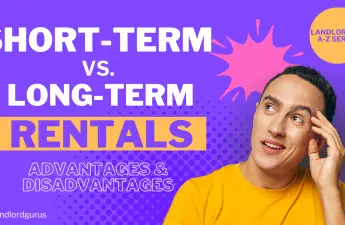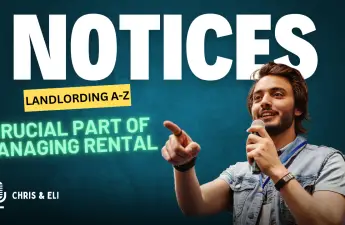In previous episodes, we discussed everything from purchasing your first rental property to getting it ready to finding a tenant. We have also talked a bit about collecting deposits and initial move-in costs. Here we will specifically discuss collecting rent, including ways to collect it and some best practices. Below is a brief rundown. See the complete episode for more information.
![]() Also Read: Online Rent Collection: The Definitive Landlord Guide
Also Read: Online Rent Collection: The Definitive Landlord Guide
Rent Collecting Options
Cash
We recommend against using cash to collect rent. It’s not very secure, and can be lost, stolen, etc. You should also issue a receipt, which is often difficult to do in the moment.
Peer to Peer Payment Platforms
There are various payment platforms these days that make sending and transferring money a breeze. They all essentially aim to make the transfer of funds as quickly and painlessly as possible. There may be fees, transfer limits, no cancellations, payments sent to the wrong account, etc.
However, take note that in some locations, if a tenant has made a partial rent payment, even just $1, you may not be able to start an eviction process. If an eviction process is currently underway, a partial payment may reset the eviction proceedings back to the start. With peer-to-peer payment platforms, it is easy for a tenant to send you a partial payment even if you don’t want to accept it.
Direct Bank Transfer
While these can be a little more difficult to set up, tenants can send rent payments directly to your rental property bank account. Direct deposits require providing your tenants with personal details such as bank routing and account numbers, many people fear that these can be unsafe or insecure.
Like with some of the other peer-to-peer options described above, there are no means to restrict a partial rent payment. A tenant might use this to send just a small amount each month to stop eviction proceedings.
Property Management Software
Many landlords and tenants see peer-to-peer payment apps and direct deposit options as cheap, simple, and easy to use methods for their online rent payments. However, rental property management software may be the better option for online rent collection.
Services like Avail, PayRent, and TenantCloud are safe and secure way to collect rent online, and provide you with a range of other property management features to help you run your rental business.
You can gain access to other valuable features such as advertising and listing, tenant screening, online applications, lease signing, maintenance management, financial reporting, and more.
Other benefits:
- Save time and labor instead of collecting checks, going to bank, etc
- Reduce late/missed rent payments with auto-reminders and payments
- Integrated accounting and bookkeeping
Grace Periods
Should you allow grace periods? Sometimes a tenant has something unexpected and may ask for extra time to pay rent. Or maybe they just forgot to get rent in on time. If you have a good tenant, you might consider allowing late payment or two. However, be careful. This can be a slippery slope.
To avoid this, set a due date — usually the first of the month. Generally, leases include a grace period of five days before late fees are enforced. It’s easier to waive a late fee when there is truly and exceptional circumstance if you want to, but can be harder to try and enforce one when you never do. With property management software, late fees can be automated and applied systematically
Late Fees
In the lease, make sure that you set out what the late fee will be. Will it be a one-time charge or daily? Late fees can help encourage your tenants to pay on time. However, some local governments limit the amount of late fees you can collect.
![]() Also Read: What Are the Best Practices for Dealing with Late Rent Payments?
Also Read: What Are the Best Practices for Dealing with Late Rent Payments?
Non-payment of Rent
If payments are late, enforce late fees. To prevent this, send reminders. Certain property management software can automatically do this for you.
Send out pay or vacate notice immediately. Even if they end up paying soon after, have this documented is important. In some cases, need to demonstrate a history of late or missing payments or a certain number of notices delivered in a 12-month period. Diligently documenting and sending notice provides that paper trail.
Payment Schedules
Consider setting up custom payment schedules for some tenants. If a tenant gets paid every other week, and has a hard time setting aside money for rent, maybe set them up to pay half month rent soon after paydays. Some rent collection software can automate this and debit tenant accounts on specific dates.
Takeaway
When it comes to rent collection, set expectations for when and how your tenants need to pay rent. Consider using property management software to automate many of these tasks, as well as offer other tools to help manage your rentals.

Landlording A-Z Series:
Our Landlording A-Z series will walk you through each of the stages, tasks, and issues involved in rental real estate investing. In our next installment, we’ll discuss evictions.




